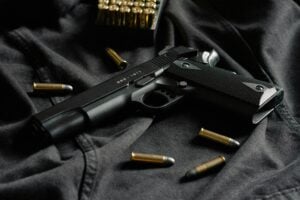In courtrooms, there’s a big debate about firearms analysis. Some experts think that every gun has unique marks, called “tool marks,” made during the manufacturing process. So, if a bullet or shell casing from a crime scene matches the marks on a suspect’s gun, the analyst might say the bullet came from that gun.
But since the 1990s, we’ve learned that guns of the same make and model can leave similar marks. This means it’s hard to say which specific gun a bullet came from. For example, if you read about a gun like the Boberg XR9-L, you might find that firing one could create similar marks to another XR9-L. So, experts might only be able to say which company made the gun, not the exact one used in a crime.

In 2009, the National Academy of Sciences (NAS Report) said analyzing tool marks on bullets is subjective. This means it’s based on a person’s judgment, not on strict rules or scientific proof. A person, not a computer, decides if there’s a match. This process is often used in court, even though it’s mostly guesswork. People in the legal community agree that more research is needed to make firearms analysis more reliable.
Although the NAS report raised concerns about firearm and toolmark analysis, the forensic community has responded proactively by taking steps to address these issues. For instance, in 2015, The Center for Statistics and Applications in Forensic Evidence (CSAFE) was established in collaboration with the National Institute of Standards and Technology. They aim to conduct additional research and integrate more statistical and rigorous standards into forensic practices. In 2019, the American Statistical Association issued guidelines for forensic scientists to follow when discussing evidence, further promoting accuracy and reliability in their statements and opinions. Additionally, there has been increased research and funding allocated towards developing improved methods for matching toolmarks, including the utilization of 3D topographical technology. These initiatives represent positive efforts to restore confidence in forensic evidence.
Courts are starting to see the problems with using this evidence. In some cases, experts can’t say their conclusions are 100% accurate. In others, they can’t say a bullet came from a specific gun because it could confuse the jury. For example, in a case called United States v. Taylor in 2009, a court said an expert couldn’t say his method was completely reliable. In another case, United States v. Alls in 2009, a court stopped an expert from saying a bullet came from a specific gun. They said this could mislead the jury because firearms analysis is subjective. In United States v. Glynn in 2008, a court said an expert couldn’t use the term “reasonable scientific certainty” in his testimony but had to say “more likely than not.”

